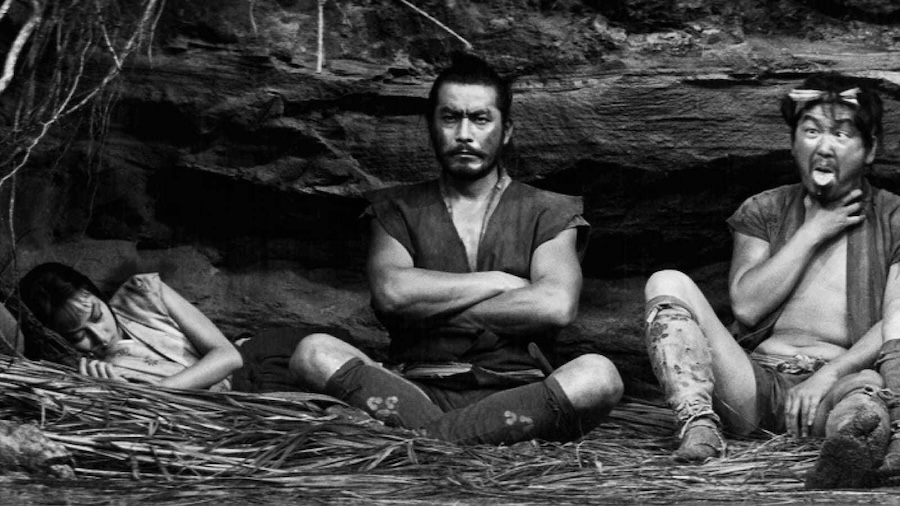

Akira Kurosawa’s first film in widescreen also became one of his favorites. It has been said that he made it as a sure bet for the studio, which had supported his riskier endeavors throughout the 1950s. The Hidden Fortress certainly had Kurosawa’s touches, but above all it was an adventure-comedy that audiences were guaranteed to enjoy. One of the young men who saw the movie was so excited that he went on to make an American version of it. It was a little film called Star Wars (1977).
Escaping a battle
In 16th century Japan, two exhausted and constantly bickering peasants called Tahei and Matakishi (Minoru Chiaki, Kamatari Fujiwara) escape the aftermath of a battle fought between neighboring clans. The greedy men find some gold along the way – but also run into a mysterious, authoritarian man who turns out to be a renowned general by the name of Rokurota Makabe (Toshiro Mifune). The peasants are clueless, but the general is actually escorting Princess Yuki (Misa Uehara) back to her land, Akizuki; the gold belongs to her, a financial guarantee to get the Princess’s clan back on its feet after the war.
The general needs the peasants to help them through areas that are full of enemies and they are promised a fair share of the gold if the mission is successful. But can he trust them?
A good-humored charm
When George Lucas saw this film he found the amusingly testy relationship between the two farmers intriguing. In Star Wars, they would turn into C-3PO and R2D2. An ingenious transformation, and obviously the princess and the general would also inspire the creation of Leia and Han Solo. Lucas probably borrowed some of the settings for both Star Wars and Return of the Jedi; the desert and the huge forests seen in the latter part of the film resemble key locations in those chapters of Lucas’s franchise.
The cast tries its best, not least Toshiro Mifune, this greatly versatile actor, who looks like he’s having fun with his character.
Fans of Kurosawa’s Seven Samurai (1954) will also be satisfied to see Mifune in a sword fight with a rival warrior; even though this is meant to be a comedy, the movie has a few tense, well-made action sequences. Few modern viewers in the west will slap their knees laughing, but there’s a good-humored charm between the two peasants and their fearful relationship with Mifune’s imposing general. The cast tries its best, not least Mifune, this greatly versatile actor, who looks like he’s having fun with his character, and Uehara as the strong-willed princess who is forced to act like she’s deaf and mute but can barely contain herself from speaking out against the injustice and cowardly greed she witnesses. It’s a simple story with cardboard characters that goes on for too long. The running time begins to take a toll in the movie’s last half hour, but Kurosawa nevertheless turns his one-note fairy tale into good entertainment.
Whenever one’s attention begins to wander, it is still fascinating to spot the ingredients that helped shape Star Wars. I don’t know exactly when Lucas saw the movie, but it is easy to imagine him sitting there in the darkness of a theater studying the film, letting his imagination run wild, thinking “what if…”.
The Hidden Fortress 1958-Japan. 139 min. B/W. Widescreen. Directed by Akira Kurosawa. Screenplay: Akira Kurosawa, Shinobu Hashimoto, Ryûzô Kikushima, Hideo Oguni. Cast: Toshiro Mifune (Rokurota Makabe), Misa Uehara (Princess Yuki), Minoru Chiaki (Tahei), Kamatari Fujiwara (Matakishi), Susumu Fujita, Takashi Shimura.
Trivia: Original title: Kakushi-toride no san-akunin. Co-produced by Kurosawa. Alternative prints run 90 and 126 minutes. Remade in Japan as The Last Princess (2008).
Berlin: Best Director.
